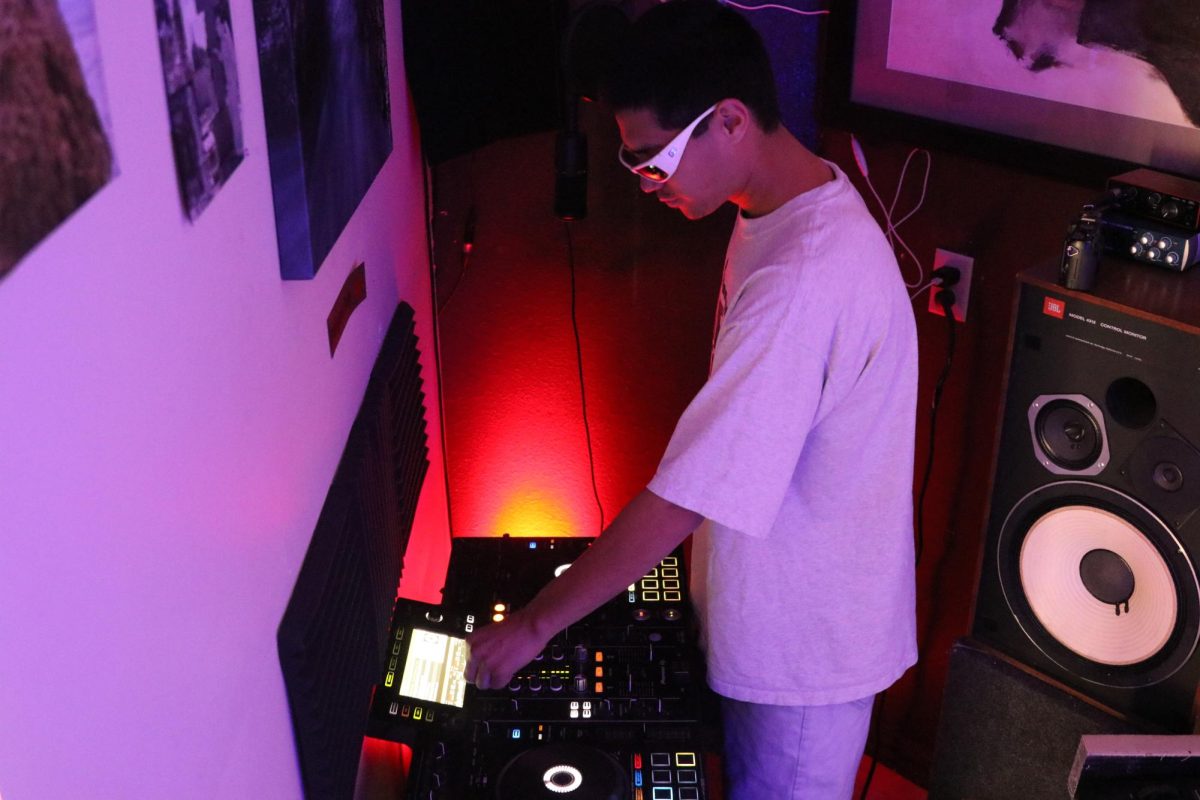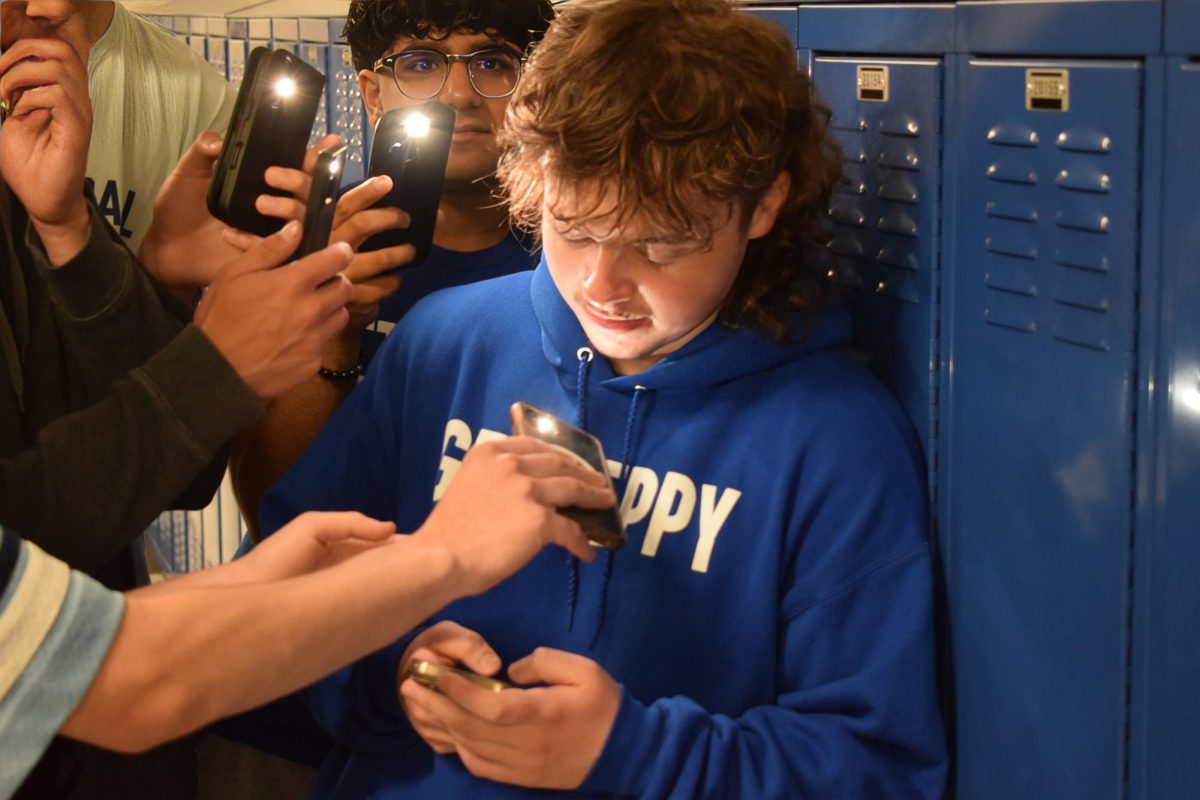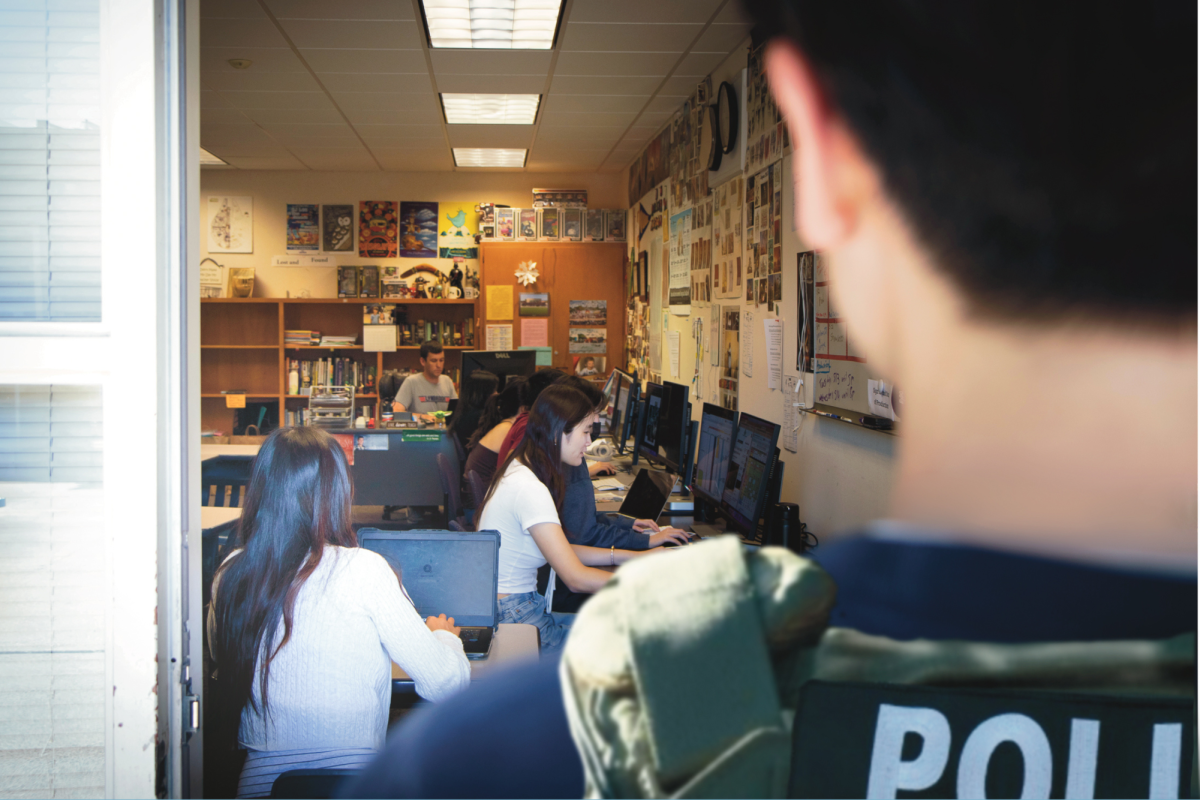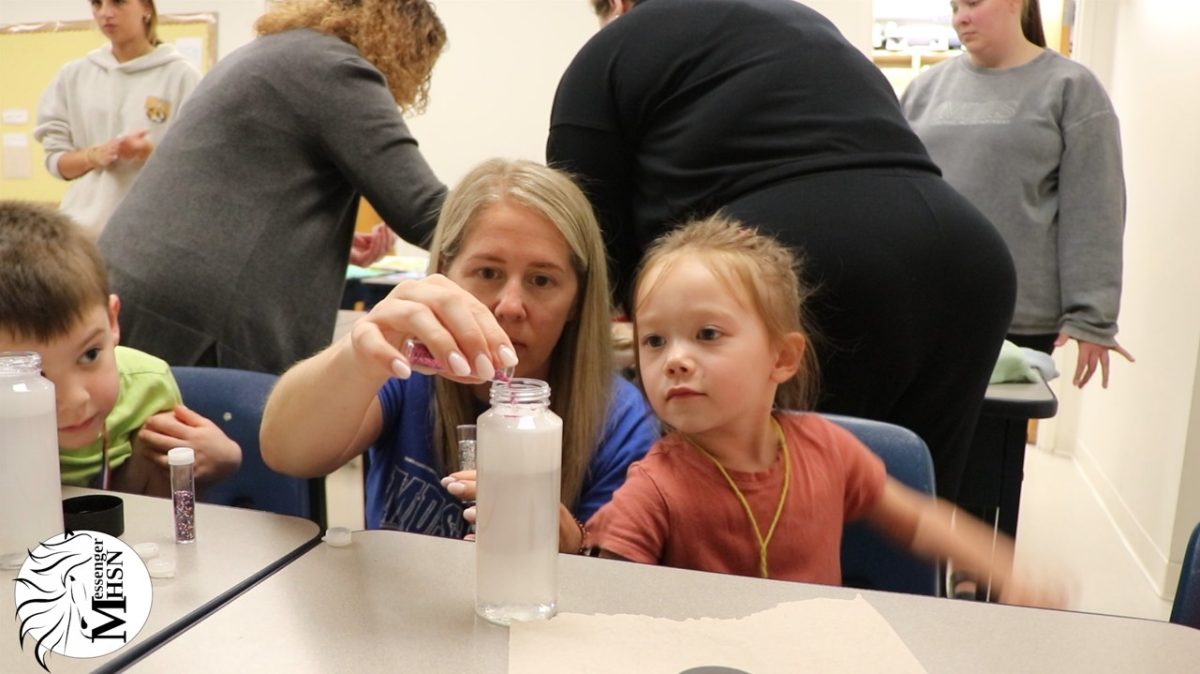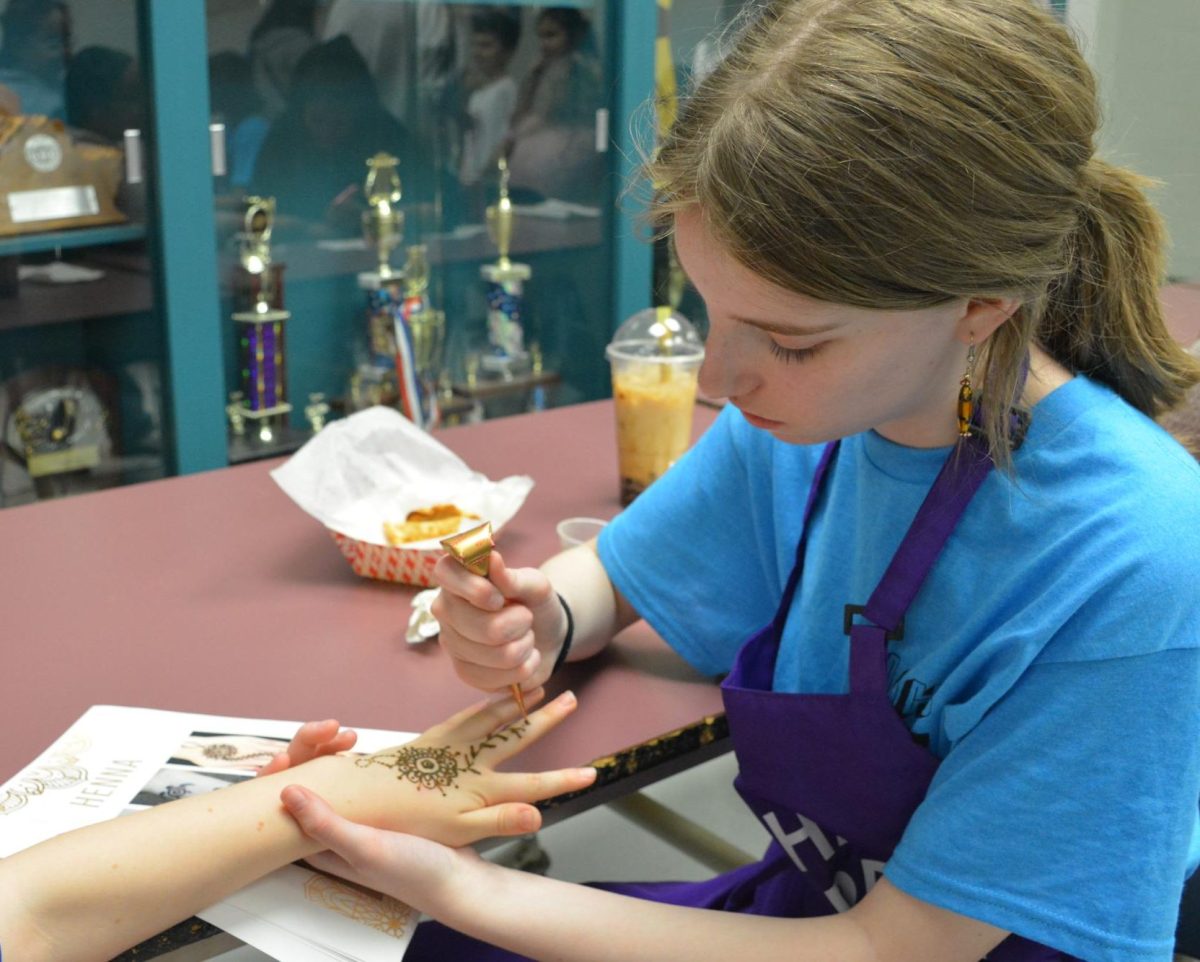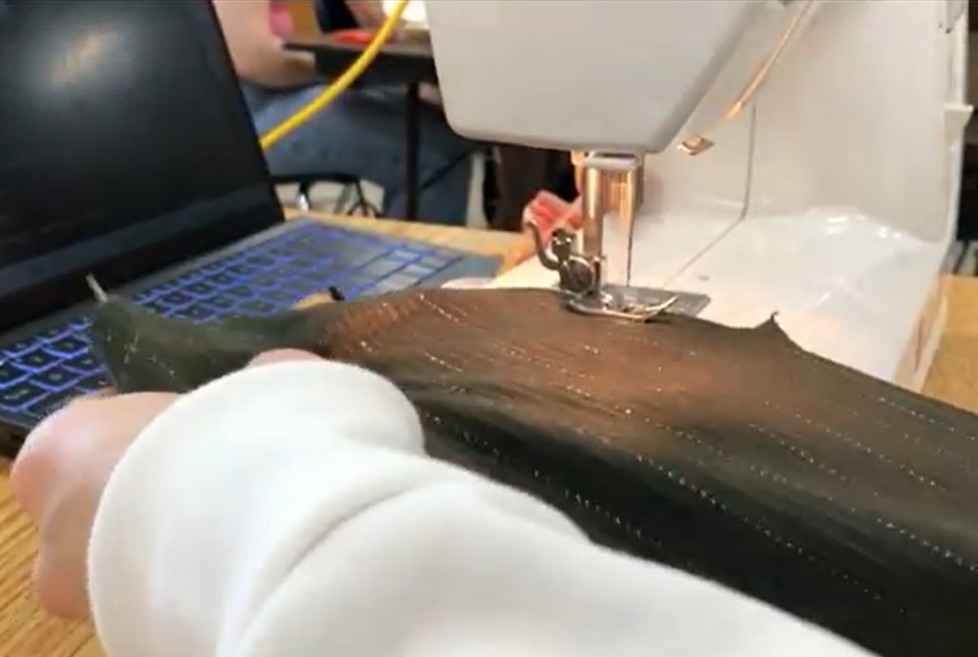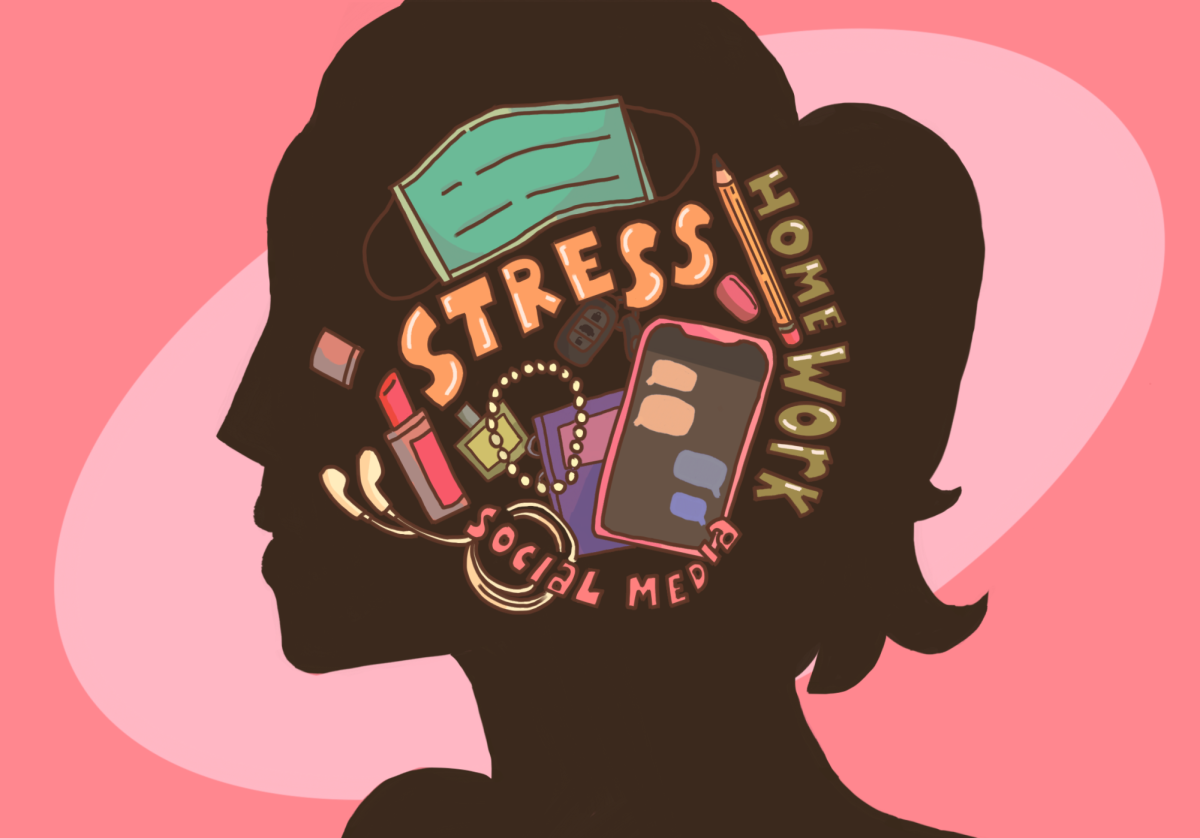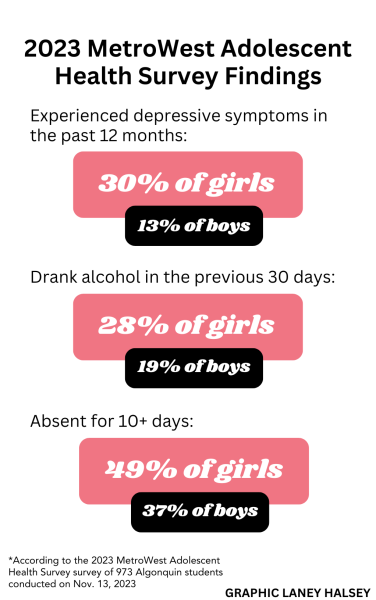Troubling Trends:
Rising substance use and absenteeism among female students
Amid a growing national conversation about adolescent well-being, new data from ARHS has revealed concerning trends: female students have higher levels of absenteeism, substance use and mental health challenges than their male peers.
These trends were first indicated by the 2023 Metrowest Adolescent Health Survey (MWHS), a biennial survey of middle and high school students in 25 Metrowest communities that collects data to determine priorities and enhance local programs for adolescent health and wellness. The 2023 MWHS was most recently administered on Nov. 13, 2023 to 973 Algonquin students.
Females reported higher alcohol usage in every metric in the 2023 MWHS: 49% of females reported lifetime alcohol use compared to 41% of males, 28% of females attested to current alcohol use (within the previous 30 days) compared to 19% of males and 17% of females participated in binge drinking in the past 30 days opposed to 12% of males.
Additionally, the data indicates that nearly 30% of girls experienced depressive symptoms in the past 12 months, compared to 13% of male students. This discrepancy remains consistent with the 2021 MWHS with 36% of females and 17% of males reporting depressive symptoms in the previous 12 months.
This data reveals the need for investigation into these trends to better understand why they are occurring. Why are female students experiencing these issues more frequently? Is it the result of the pandemic, academic rigor, social media or a blend of internal and external factors?
Males and females have historically had similar rates of substance use until a shift in the 2016 and 2018 MWHS statistics which saw females begin to exceed their rates. For example, in 2014 current drinking rates were similar between the two sexes, whereas in 2018 36% of females versus 29% of males reported current drinking.
School administrators are grappling with the implications of this data, pointing to new social pressures and considering underlying causes as potential contributors to these shifts.
“Four to six years back, when girls first matched boys’ substance use, we expected it to regress, but it didn’t,” Principal Sean Bevan said.
One potential manifestation of these factors is the lower attendance rates among female students. Algonquin’s attendance data from the Department of Education for the 2023-2024 school year shows that girls are missing more school than boys. Specifically, 49% of female students were absent for 10 or more days, compared to 37% of male students.
According to Nurse Leader and District Wellness Coordinator Mary Ellen Duggan, these trends are indicative of broader issues.
“I think it is important to note that our data aligns with data from our surrounding communities, state and nationally,” Duggan stated via email. “It is something we need to look at from a wider perspective to see what other influences are impacting the females in our society.”
Although the data reveals evident patterns that girls have comparably higher substance usage, depressive symptoms and more absences, the reasoning and connections behind them is more difficult to pinpoint.
By examining the numerous factors throughout the article, we hope to paint a more nuanced picture of why these problems are occurring and develop an understanding of potential solutions and steps that can help.
Rising Pressures:
A window into why girls have been struggling
Teenagers are under pressure. They always have been, but now there may be more stress than ever. From navigating the aftermath of the pandemic, to the rise of social media and growing concerns over mental health and substance use, to finding connection in school and its seemingly endless work, these challenges are difficult for anyone, but they appear to disproportionately impact females.
According to a Harbinger survey of 110 students from Oct. 15 to 20 through Google Forms, 73% of respondents reported above-average stress levels in the previous 30 days. Sixty percent of respondents stated school was a cause of their stress. Additionally, the 2023 Metrowest Adolescent Health Survey (MWHS) states that more than twice as many ARHS females (36%) as males (16%) reported that life had been “very stressful” in the previous 30 days.
These rising stress levels manifest in absenteeism and substance use, metrics that have risen for females in recent MWHS surveys.
“I think it’s a very stressful time to be a teenager,” Bevan said. “I think it’s probably the most stressful time in the history of being a teenager.”
Administrators, such as Bevan, are working to understand the potential connections between stress and attendance, especially for girls.
“I think for our female students, they are managing that stress in ways that are different than boys,” Bevan said. “And I think for reasons I don’t fully understand and I’m trying to learn about, it’s demonstrating itself in some weak attendance trends.”
For many, lower attendance is intertwined with the responsibilities of school itself.
“I think school is probably number one of all the factors that cause me stress,” senior Trisha Shetty said. “It’s just like one big to-do list every single day…it takes a lot of mental work to sit in there for six hours and try to digest everything.”
Although the concept of occasional homework-free and assessment-free “Wellness Days” have existed at ARHS since the 2023-24 school year, students appear to be taking their own “mental health days” to take a much-needed break or catch up on work more than ever. While each of these aid in relieving some stress, sometimes the issues go beyond what a day can do.
“Even if my mental health isn’t doing well, I still need to go to school as the work that I have to do is a bigger burden than just taking the day off to help recover slightly,” a survey respondent said.
According to the 2023 article “Influence of Stress and Emotions in the Learning Process” from the medical journal “Healthcare,” high stress levels can make students fall behind even if they have good attendance. The research indicates that stress has a large influence on the learning process.
“When stress is moderate, it can enhance learning and memory,” the article states. “However, when stress becomes excessive or chronic, it can have negative effects on learning.”
Guidance Director Lisa Connery witnesses the impacts that stress can have on students.
“When you’ve overloaded yourself to the point where you’re so stressed and you’re not getting enough sleep, like you’re forgetting things or you’re losing focus…your stress is overwhelming your body” Connery said. “Sometimes it’s less about you not knowing [the material] if you’re performing poorly on a test; it might be that you’re just so stressed and sleep deprived that you can’t recall what you’ve learned.”
For many girls, excessive stress can impair their ability to do something as simple as get ready for school, a task that can carry heightened levels of physical scrutiny.
“As a girl, I care a lot more about how I’m presented to others,” Shetty said. “Sometimes when I’m not able to be fully confident, it really affects my day because there’s a lot of pressure to always be at our best. Either you have to be dressed well, or your hair has to look good or you have to smell nice.”
This pressure on appearance aligns with influencer culture that dominates social media on apps such as Instagram and TikTok that students use on a daily basis.
“Students nowadays are bombarded with social media, and I think a lot of the information that is out there sets an unrealistic bar and expectation for life,” Connery said. “Everything’s perfect. Everybody has perfect makeup and perfect hair and perfect clothes.”
Unrealistic standards have the potential to heighten stress and negatively impact students’ well-being.
“The social media influence is so strong,” Connery said. “The perception that if students don’t do X, Y and Z, that somehow they’re not going to have a fulfilling life is definitely a strong current to swim against.”
According to the Harbinger survey, 64% of respondents said they use social media as a stress coping mechanism. The MWHS found 39% of females report using social media for more than three hours a day.
The MWHS also indicates female students are more likely to report negative experiences online and worsening of mental health related to digital use. Thirty-four percent of females state their mental health is declining due to social media usage, according to the MWHS. This suggests that the hours of each day many girls spend on social media is having a detrimental impact on their mental health.
“In general, I think [social media] might elevate stress levels because it can be used to procrastinate other things,” junior Niamh O’Sullivan said. “People, myself included, spend so much time on it.”
School officials wonder if there is a correlation between high stress levels and unhealthy coping mechanisms, such as substance use, and poor mental health.
According to the Oct. 2024 Harbinger survey, in the past 12 months, 30% of girls and 13% of boys have experienced depressive symptoms, with 14% of girls considering suicide in comparison with 8% of boys.
According to Communities Confronting Substance Use & Addiction (CCSA), a non-profit organization that aims to bring awareness and education to substance use, girls and young women can be more receptive to stress, anxiety and depression, and they frequently turn to alcohol as a coping mechanism with mental health issues.
Bevan also sees how mental health and substance use can go hand-in-hand.
“I think it’s a bit of a chicken or the egg scenario where you have two concurrent trend lines on the rise,” Bevan said. “One [example] is substance use and other risk behaviors increasing at the same time that concerning mental health behaviors are increasing. I think both of them are intertwined and related, and I don’t quite know exactly why or what to do about it.”
This complex issue is exacerbated by the COVID-19 pandemic that shut down schools over four years ago. This led to remote learning followed by a hybrid model, which left students spending at least half their time at home for two years. This, according to Bevan and Harbinger survey respondents, made it harder for some to readjust to traditional schooling and normalized missing school days for some students.
“I think it made it less ‘severe’ to miss out on a day of school after missing out for months and months of school,” a survey respondent wrote. “So I think I had less attendance in middle school right after the pandemic than I would have had if the pandemic didn’t happen.”
The pandemic also accelerated online learning as teachers converted lessons to digital formats. Learning through online resources and platforms has remained integral, leading some students to view school as “optional.” According to the Harbinger survey, 26% of girls and 13% of boys report the shift impacted their attitude towards attendance, with many expressing they now feel capable of completing their work from home. In short, the pandemic normalized missing school for many, especially females.
“Certainly, we have data from the Metro Adolescent Health Survey that is really clear and very concrete that our female students’ mental health measures are much, much more worrisome than boys, and that matches our experience here in the building,” Bevan said.
Seeking Solutions:
Investigating the path forward
Faculty and staff have taken actions to address and counteract substance use and high stress levels within the female student body, with hopes of helping to improve mental health and school attendance. The efforts include a combination of targeted programs, adjusted school policies and enhanced support systems.
Two staff members of Encompass, a local substance abuse coalition, alongside Southborough Youth and Family Services led a focus group with female students in November to review and converse about 2023 Metrowest Adolescent Health Survey (MWHS) data, which showed increased risk behavior among female students.
“I think right now our data just seems to suggest that our female students require more attention than our male students,” Bevan said. “That is important for us to listen to: what that data says and develop some ways to respond.”

While changes in school policy help, administration is prioritizing productive feedback and connection with the community. Bevan reports that increased systems of communication have the potential to improve mental health and attendance outcomes.
“What we are finding is that the better systems we have for communicating with students and with parents provide better outcomes for students to get into school,” Bevan said.
New programs spearheaded by Youth Wellness Coach Geena Ciambelli are also being implemented to better Algonquin teachers’ knowledge on student substance use and mental health. Project Amplifying Our Futures (Project AMP) and iDecide are statewide programs and not only educate students about the dangers of substance use but also help those struggling with their mental health.
Ciambelli shared with the Harbinger on June 7 the importance of these programs in generating safe spaces for people to talk through issues and gain coping skills.
“I hope in the future students learn more about me and the programs that are offered, and have more of a place at this school,” Ciambelli said. “[I want to] be able to talk to more students, have follow-ups and build relationships.”
Beyond these supportive environments, Algonquin has made changes to the school schedule to combat attendance challenges. The rotating schedule, a version of which was first implemented in the 2023-24 school year, prevents students who are late to school from repeatedly missing the same class during the day. According to Bevan, this is part of a broader effort to make school less stressful and more accessible.
In addition, for the past year, teachers have been directed to submit attendance for every class period, which helps students be more accountable because parents and administration are immediately aware of classes they have missed.
Another notable adjustment in response to student stress was the policy change to assigning school work over vacations and long weekends. Previously, it was common practice for students to have a significant amount of homework over vacation weeks and holiday weekends. Now, with the exception of AP classes, there is no homework during these times. The English department even ceased their longstanding practice of required summer reading for the 2024-25 school year.
“Eventually you have to stop working on schoolwork, but a lot of students have to work, or they do athletics or they do extracurriculars, and sometimes you just need to do nothing to give your brain a break because your brain needs to rest once in a while,” Connery said.
However, senior Henry Hart believes that no matter how many avenues there are for people to get help, if they do not want it, they will not receive support.
“When it comes to mental health challenges and difficulties, the biggest challenge is finding someone to talk to about it, that’s really all people are looking for most of the time,” Hart said.
The guidance department welcomes students to come in and speak with their counselors if they need support. However, many students such as Hart encounter a key challenge: finding a better balance between supporting students’ mental health and maintaining academic expectations.
“We are certainly mindful that for some kids, there’s a lot of stress associated with school, with work completion, with falling behind,” Bevan said. “We’re trying to meet the tension of having high standards, but not making kids feel lousy about the school being missed.”
Additionally, in recent years multiple girl-centric extracurricular organizations have been formed by female students as spaces for girls to come together to explore common interests and support other women. These organizations include Girl-Up, Adventures Through Open Minds (ATOMS) and Women in Science and Engineering (WISE).

“We consider ourselves [WISE] a safe space for women in science,” WISE president Anya Jandu said.
Even as these targeted initiatives continue to evolve, it’s clear this is an ongoing process for administration and faculty as they search for solutions.
“I think we are always looking out for and worrying about and thinking about how we can help all students,” Bevan said. “…So right now we’re in data gathering and data interpretation mode, and then we’ll develop some recommendations for how to proceed.”
Reporting by Altea Mehillaj, Lila Shields and Calla Torres.
This story was originally published on The Harbinger on March 31, 2025.









